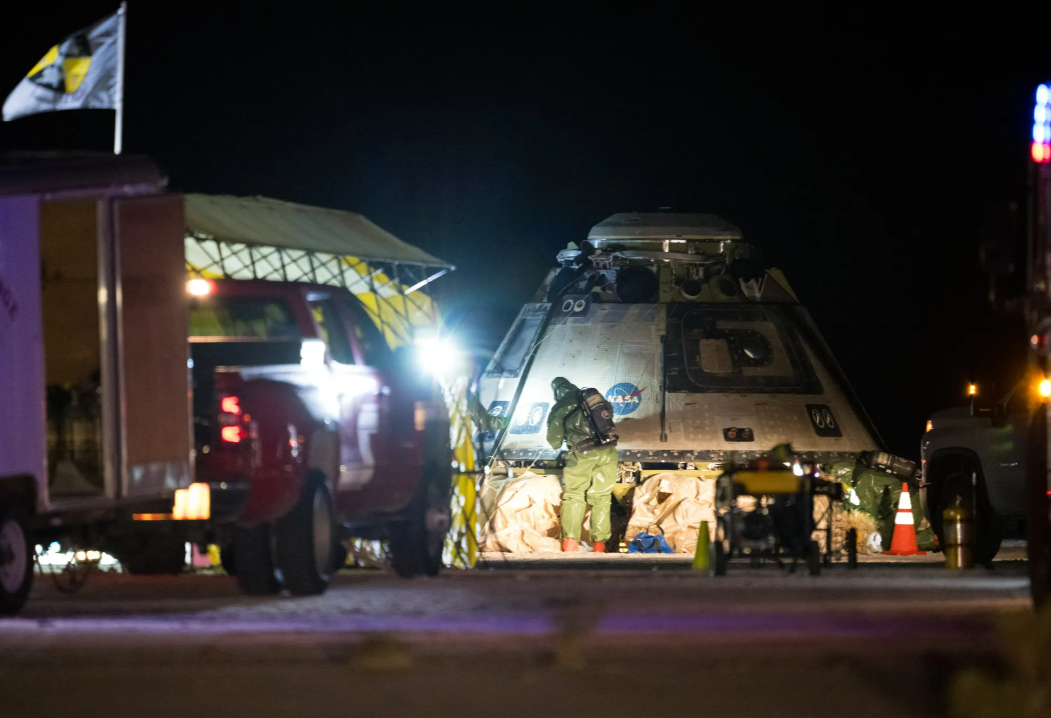After months of delays and uncertainty, Boeing's Starliner capsule returned from the International Space Station, landing at White Sands Space Harbor in New Mexico just after midnight Saturday. The capsule returned to Earth autonomously without its two crew members, NASA astronauts Butch Wilmore and Suni Williams, who will remain at the station until next February. Late last month, the space agency determined that the two men would return to Earth aboard a SpaceX Dragon capsule after Starliner encountered technical problems early in the mission.
In a post-flight press conference Saturday, Steve Stich, NASA's commercial crew program manager, called the flight "nearly perfect." He added that the mission's success had sparked mixed feelings among staff. "From a human perspective, we're all happy about the success of this landing, but there's a part of us that's hoping that everything goes according to plan," he said. "We planned the mission to land with Butch and Suni on board."

Though the spacecraft departed leaving the station empty, the stakes were still very high for Boeing and NASA to successfully complete this return mission. At the end of the Starliner program, Small Flight can even record (Boeing has already invested more than $ 1.5 billion in the development of capsules, in addition to the $ 4.2 billion NASA contract given to the company 10 years ago. I'm doing). However, this perfect flight opened a reliable path to continue the star liner, but the engineer has a fleet in the future, including engine and some frosted engines and some frost leaks. You need to change the vehicle to guarantee not to repeat.
Boeing representatives have been tight-lipped about the future of the program, and a press conference scheduled to feature two Boeing executives was canceled at the last minute. Instead, Boeing issued a written statement to reporters: "We want to commend the Starliner team for the work they did to ensure a successful and safe undocking, deorbit, reentry and landing," Mark Nappi, Boeing's commercial crew program manager, said. "We will review the data and determine next steps for the program."
During the 90-plus days Starliner spent in orbit, Boeing maintained the capsule was safe enough to return astronauts. On August 2, the company posted an update on its website that amounted to a public defense of the capsule. “Boeing remains confident in the Starliner spacecraft and its ability to return safely with crew,” the update said. "We continue to support NASA's requests for additional testing, data, analysis and validation to ensure the spacecraft can undock and land safely.
Our confidence is based on this wealth of valuable testing conducted by Boeing and NASA." Stich provided a bit more detail, saying Boeing and NASA would have "a bit more of a good idea" about the overall schedule in about a month once they've had time to conduct more tests and review the data.

.png)


.jpg)
.png)
.png)
.png)
.png)
.png)